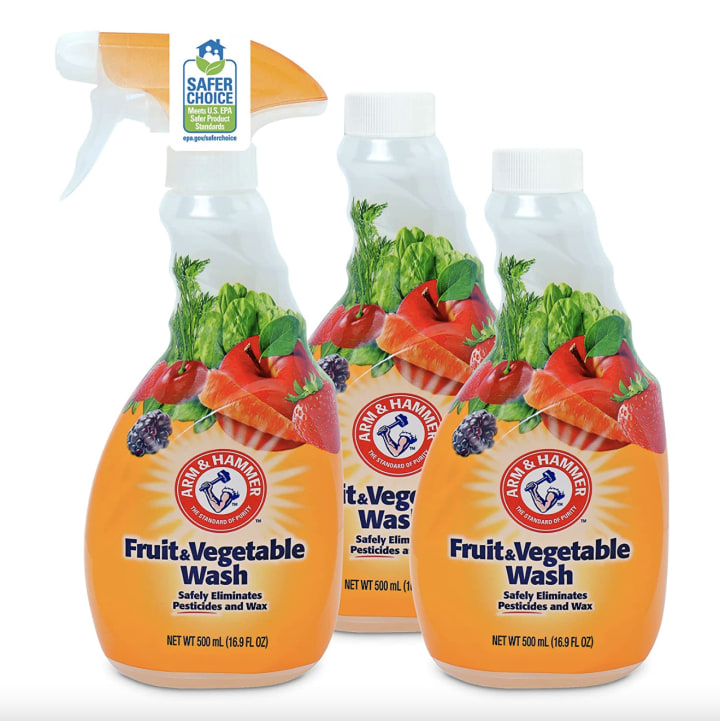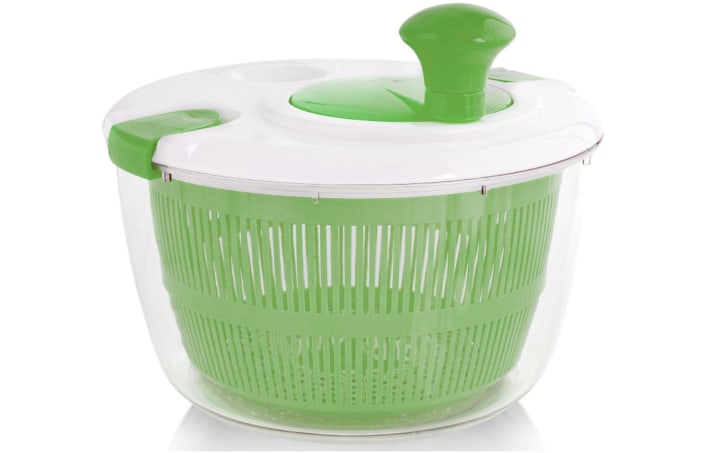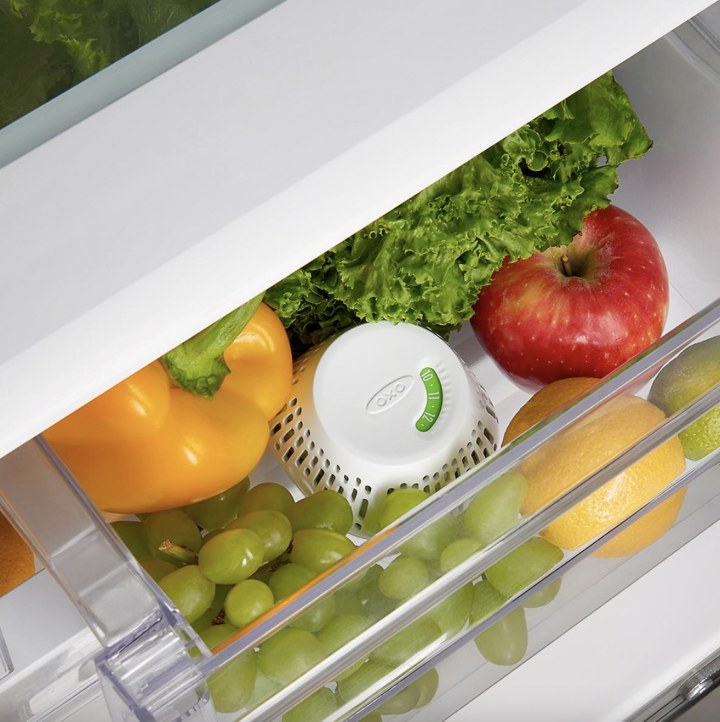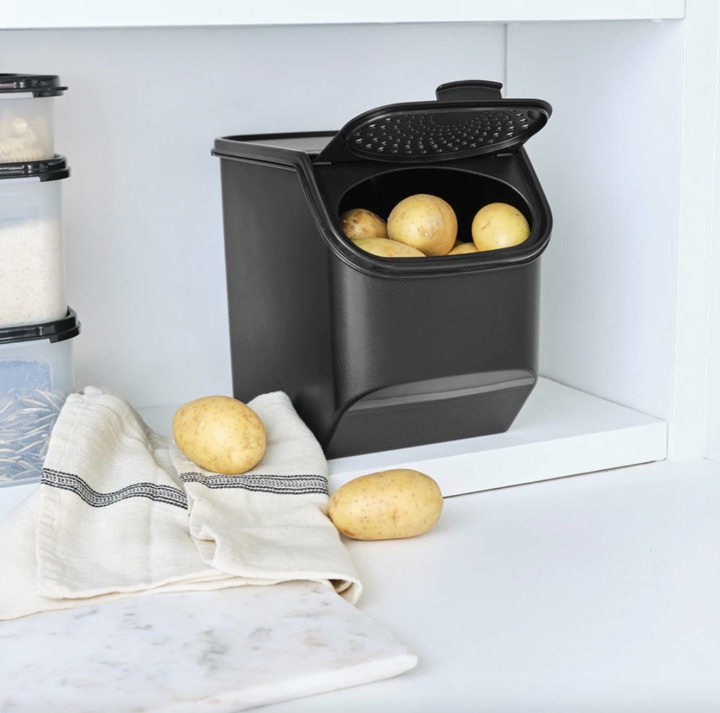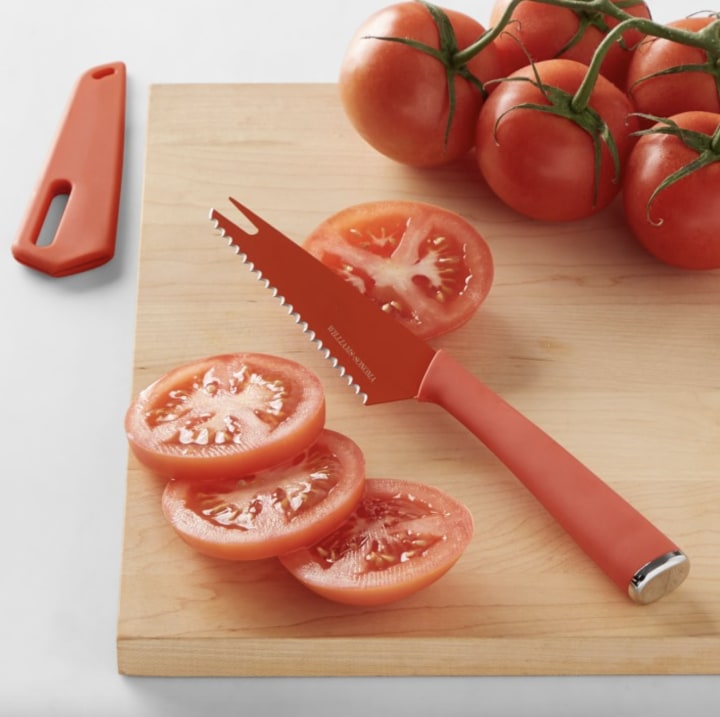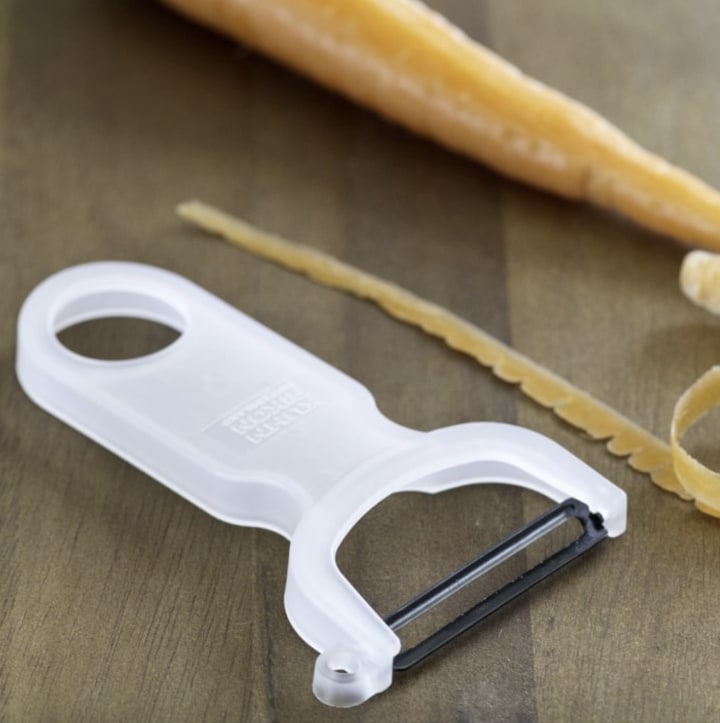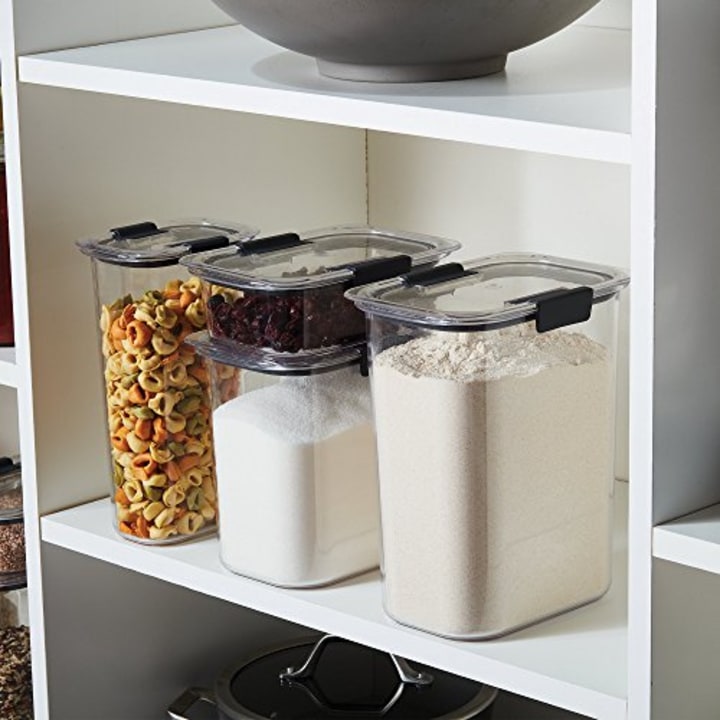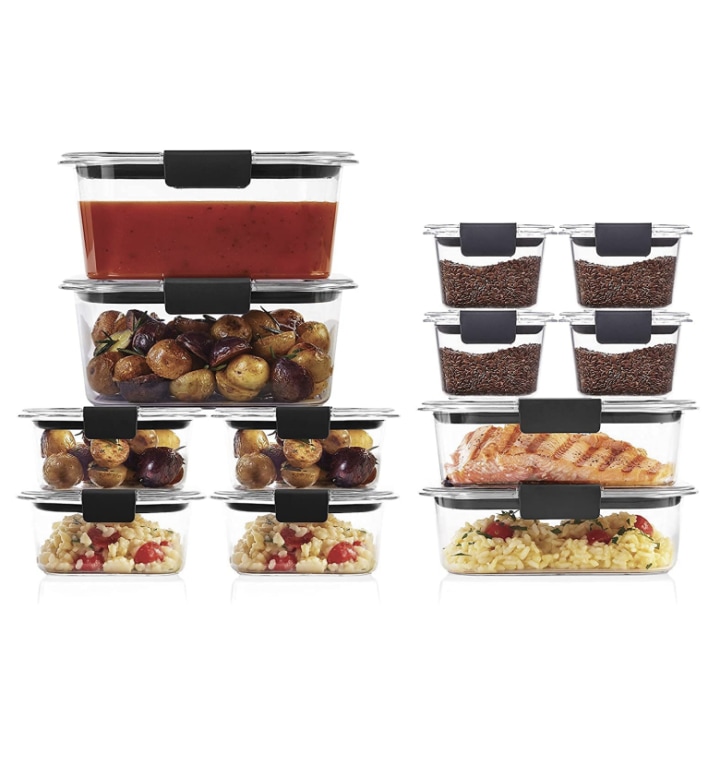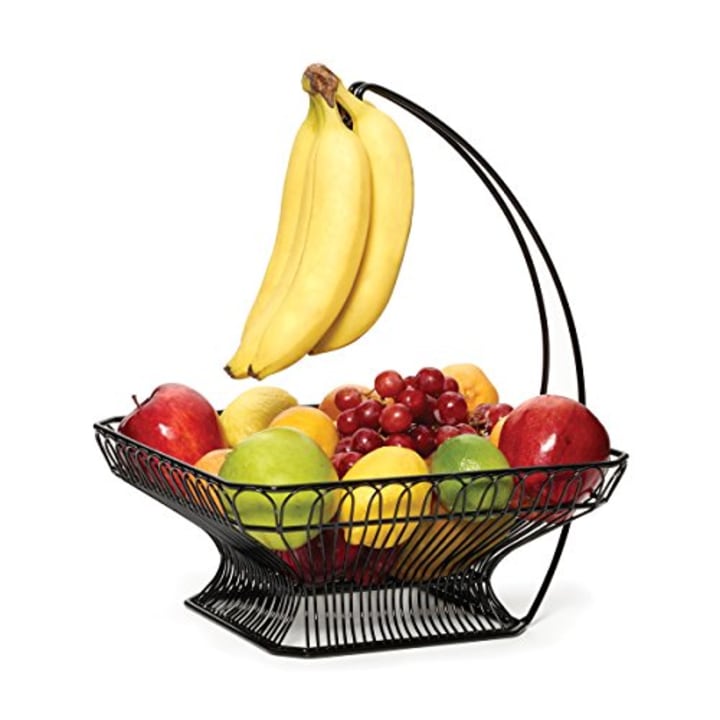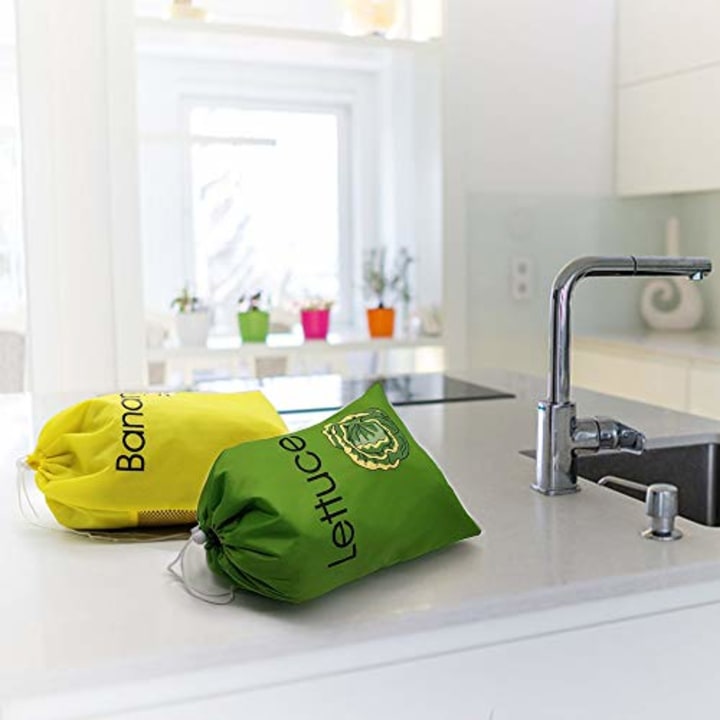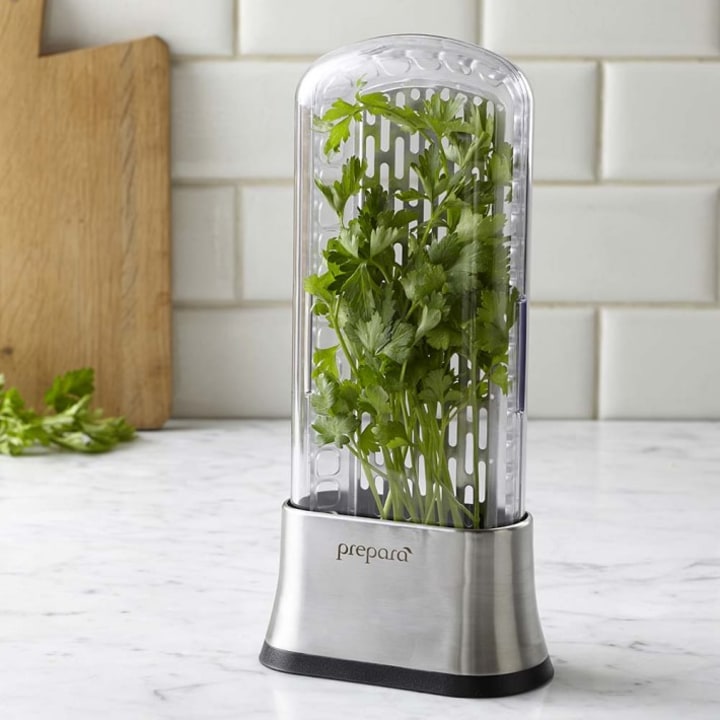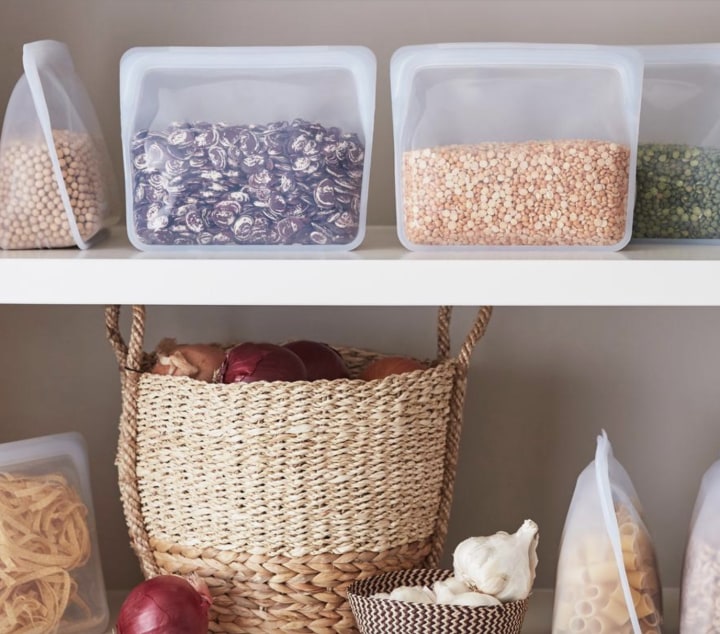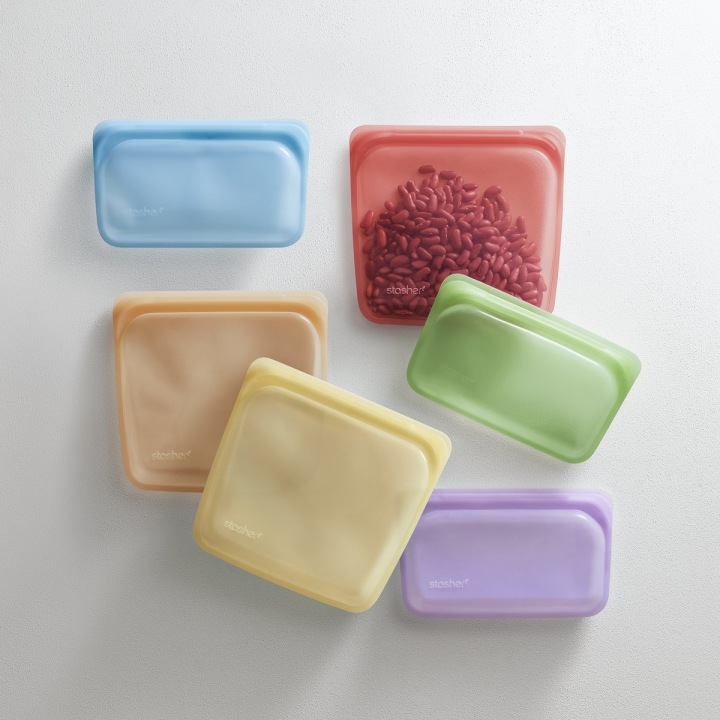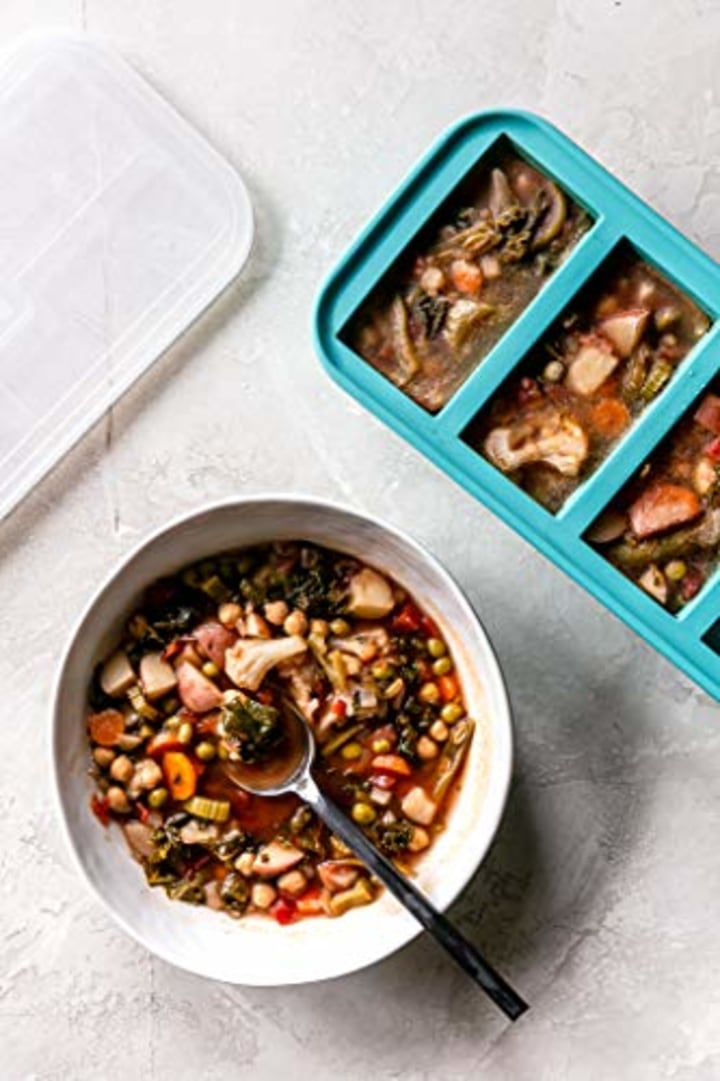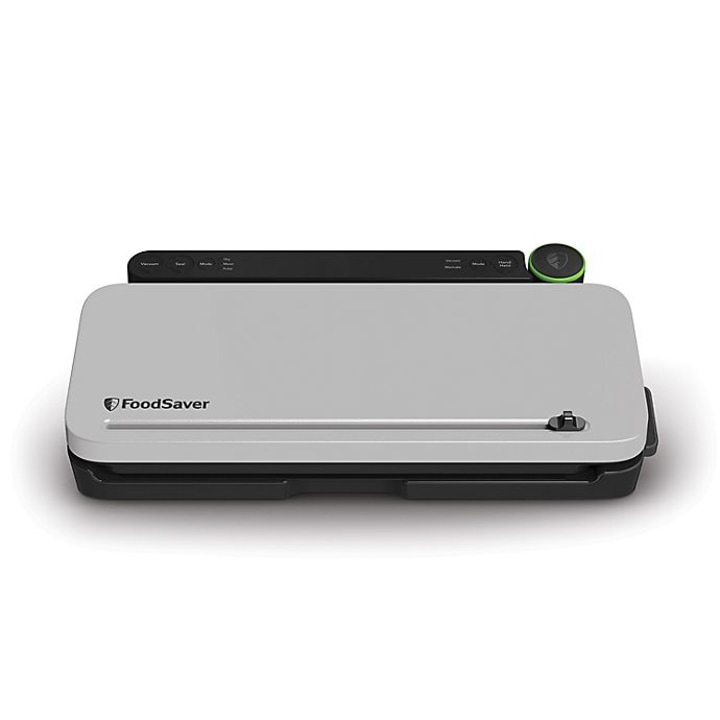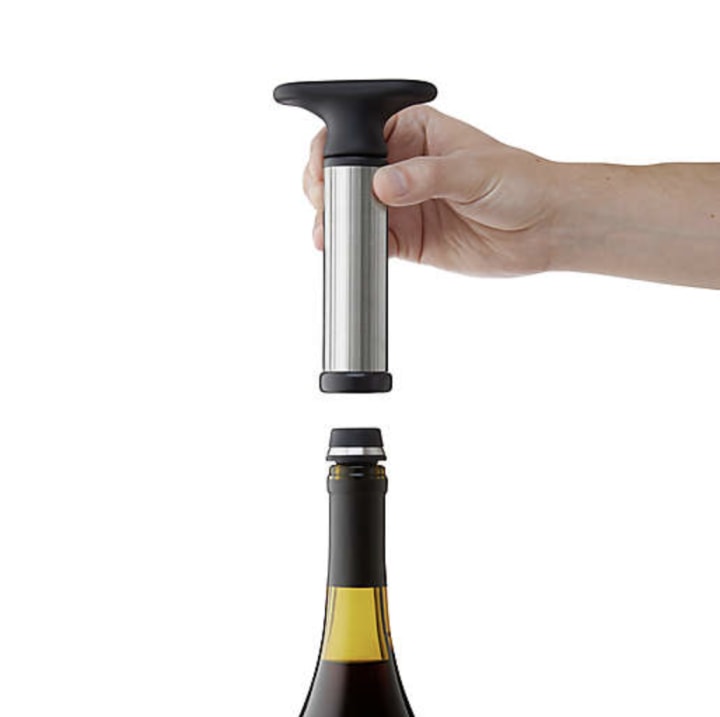Many of us find ourselves tossing fruits and vegetables throughout the week that we didn't eat in time. So many in fact, that the Environmental Protection Agency estimates over 76 billion pounds of food waste in the United States reaches landfills — more than any other material — and totals over some $161 billion, annually.
But there is a way to treat your produce so you don't end up wasting it. Chef Elena Besser stopped by the 3rd hour of TODAY to break down the steps you should be taking in order to get the most out of your produce. From wash to prep, Besser shares the tips and products you can use in order to keep your produce tasting great and make sure it stays fresher longer, so you have time to actually get around to eating it.
Keep reading to discover genius ways to stop tossing your groceries (along with your money) into the trash.
Arm & Hammer Fruit & Vegetable Wash (Set of 3)
While you can give your produce a good rinse with cold water, Besser recommends using a produce cleaner if you want a "really good clean." This wash from Arm & Hammer works to remove wax, dirt and pesticides, according to the brand, and doesn't leave behind any taste or odor. Besser recommends letting it sit for 15 minutes to make sure your fruits and veggies are thoroughly cleaned.
Zulay Kitchen Salad Spinner
After washing, you'll need to dry your produce. Rather than patting with a paper towel, Besser recommends a salad spinner like this one to help wash and dry vegetables and fruits, instead of letting them soak and dry in a bowl, where the dirt and debris will sit at the bottom. It's a 2-in-1 tool she says she "can't recommend enough!"
OXO Greensaver Round Crisper Inserts
Besser says that not all produce should be stored the same way. While some items will do well right on the counter, others need to be stored in the refrigerator or a cool, dry place in order to thrive. Produce that should be stored in the fridge, like greens, apples, berries and grapes, can benefit from a crisper like this one from OXO. It uses a carbon filter to absorb ethylene gas emitted from produce, which can help it stay fresher for longer, according to the brand. Bananas, tomatoes, and stone fruits, Besser says, should be stored on the counter.
Tupperware Potato Smart Container
For produce that should be stored in a cool, dry place — such as potatoes, garlic and onions — a special container like this one from Tupperware can help give them a longer life. It has a front access panel that helps with air flow, humidity and light, which help give the produce inside a longer shelf life, according to the brand.
Williams Sonoma Tomato Knife
When it comes time to prepare your produce, the right tools can make them easier to cut and chop. Besser recommends this small serrated knife for produce like tomatoes, which have a firmer exterior and softer interior.
Kuhn Rikon Straight Peeler
From potatoes to cucumbers to carrots, a peeler is a great versatile kitchen staple. Besser says this peeler can help make ribbons from vegetables for a slaw or perfectly uniform slices of cheese. Just be sure to wash and dry it after each use to help it stay sharp.
More food-saving storage ideas
Lifestyle expert Jill Bauer also previously joined TODAY with Hoda & Jenna to share tips for keeping your food fresh. You can find her picks for tupperware, produce bags and more below. This way, you don't have to throw that unopened bag of salad away, or the fruit you forgot about in the back of the refrigerator.
Bluapple Produce Freshness Saver Balls
This produce saver is similar to the OXO crisper insert. It uses replaceable packets that absorb ethylene gas to help keep produce fresh for up to 90 days at a time, according to the brand.
Rubbermaid Brilliance Pantry Organization (Set of 4)
Bauer says you should be storing your pantry items in an airtight container. This will prevent moisture from getting inside, so your bags of sugar and flour or bags of chips, won't spoil as early. These containers from Rubbermaid are not only airtight, but they're also clear, so you can see what exactly is in the pantry and don't end up purchasing more at the store.
Rubbermaid Brilliance Food Storage Containers (Set of 24)
This set of airtight containers will help keep everything in sight in the pantry, in the fridge and beyond. It comes in different sets with different amounts of pieces, so you can grab as many as you need to suit the size of your kitchen.
Mikasa French Countryside Metal Fruit Basket
The fruits that you leave out on the counter are notorious for spoiling or ripening too quickly, so Bauer suggests grabbing a fruit bowl with a banana stand. Since bananas put out a lot of ethylene gas, they often cause other fruits to ripen more quickly, which is why a banana stand will help them keep their distance.
iDesign Crisp BPA-Free Plastic Produce Storage Bin
For the fruits that have a home in the refrigerator, such as berries, Bauer recommends giving them a vinegar and water bath by combining one cup of vinegar with three cups of water. After you dunk them in, strain them and then rinse with water; this helps rid the berries of mold spores and bacteria, thus keeping them fresh. After rinsing, storing them in a basket like this will help them stay dry.
DE Reusable Produce Bags
You've likely let lettuce sit in a wrapper for too long, so this hack will help prevent your greens from getting soggy. Once you bring it home from the store Bauer recommends washing it, chopping it, patting it and then placing it in lettuce bags like these. They help to keep them fresh for about two weeks.
Prepara Stainless Steel Herb Savor
Herbs spoil just as quickly as lettuce, but a saver like this can keep them fresh — and it looks nicer than the plastic bag you purchase them in. Bauer says it's also great for asparagus.
Stasher Reusable Bag Bundles
When it comes to leftover produce such as onions or tomato halves, ditching plastic bags might be the way to go. Bauer says opting for silicone bags can help store and preserve your food better because they seal better. They also work for sauces since they take up less room in the fridge, and they are microwave and dishwasher safe.
Stasher Mixed Lunch Pack (Set of 6)
This set of six includes sandwich and snack bags that are perfect for lunch or leftovers. They can also be labeled with a dry erase or chalk marker.
Souper Cubes Freezer Tray with Lid
And speaking of those leftover soups and sauces..here's another way to make sure they don't go to waste...freeze it! These souper cubes are great for everything from leftover broth, to portions of lasagna or meatloafs you want to freeze to reheat for meals on a busy night.
FoodSaver Multi-Use Food Preservation System
Though it's a bit of a splurge, a vacuum storage system is worth considering for anyone who purchases groceries in bulk. The vacuum seal will protect food from freezer burn and air for months.
Rabbit Stainless Steel Wine Preserver
Last, but certainly not least, if, by chance, you have any leftover wine, Bauer recommends this preserver to prevent it from oxidizing. It creates a vacuum seal that will keep your wine (or even oils) tasting fresh for longer.
What do 'sell by' and 'use by' on food packaging mean?
"Sell by" is more helpful for the grocer, since it helps them with inventory and will give them a better shot at offering products that are fresh. "Use by" indicates the last date that the flavor and taste of the product will be at its peak. If you're storing the food properly at home, Bauer says you typically have five days after the "sell by" date to consume it. But, your nose and eyes will never steer you wrong — if it looks or smells funny, it's best to toss it in the trash. Bauer laid out a timeline for different produce below:
- For ground meat and poultry: Use within 1-2 days of sell by date.
- For other meats, steaks and most dairy: Use within 3-4 days of sell by date.
- For eggs: Use within 1-2 weeks, but always check for bad eggs by using the floating test.
For more stories like this, check out:
- 11 problem-solving gadgets your kitchen needs, starting at $9
- 10 mail-order foods to boost your mood, from cookies to comfort soups
- I tried the 'Crazy Susan' turntable — and my fridge has never looked so organized
Subscribe to our Stuff We Love and One Great Find newsletters, and download our TODAY app to discover deals, shopping tips, budget-friendly product recommendations and more!

